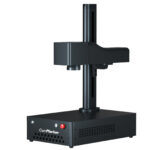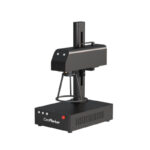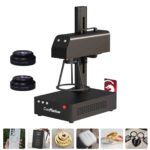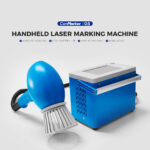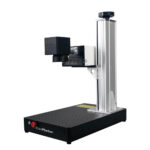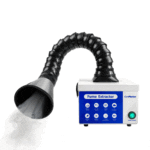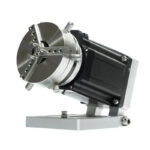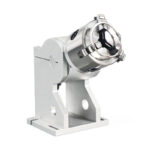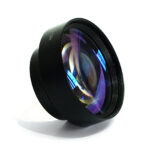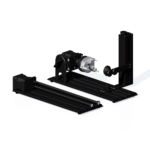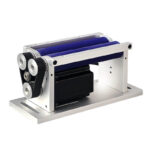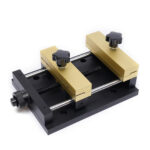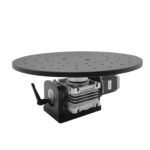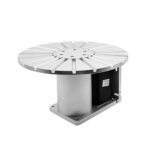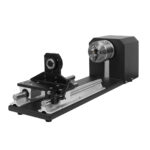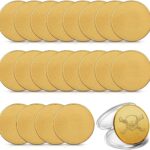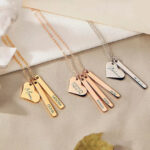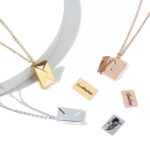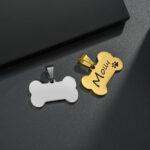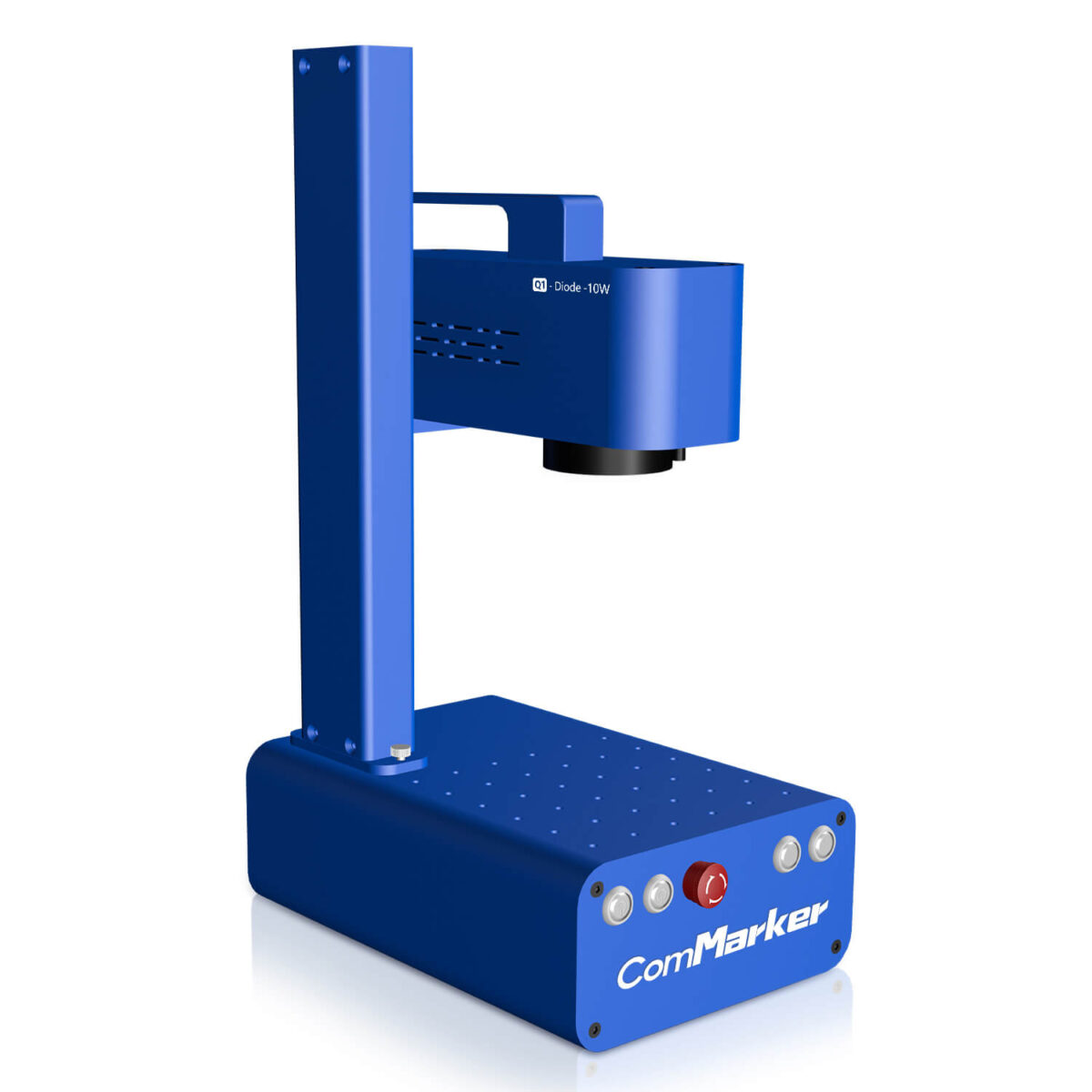What one sees in front of them is a fiber laser, a true 20w fiber laser called the ComMarker B4. It happens to be the first fiber laser in their workshop, owned for several months now. During this time, it has been extensively tested, learned from, utilized, and has facilitated the production of numerous sellable products. As they proceed to briefly inspect the machine and discuss its overall benefits for their small business, they emphasize the legitimacy of this particular fiber laser in contrast to smaller galvo lasers previously showcased in their workspace or on their channel.
ComMarker B4 – 20W/30W/50W/60W/100W fiber laser engraver&laser marking engraver machine
B4 fiber laser engraver 0.01mm Precision 15000mm/s Engraving speed 20W Laser power ComMarker B4 fiber laser engraver 0.01mm Precision 15000mm/s
The ComMarker 20w fiber laser stands out due to its authenticity as a fiber laser, unlike the aforementioned smaller Galvo laser engraver. Its operational capacity includes a working area of 11 centimeters by 11 centimeters with the included lens. Additionally, by swapping lenses (which are provided in pairs), the working area can be expanded to 20 square centimeters, a considerable enhancement. While the initial 11-centimeter square area suffices for the majority of their products, the extended 20-centimeter working area significantly broadens the range of applicable products. They acknowledge that although it may not address every need, particularly compared to other Galvo-style desktop machines limited to around 70 millimeters square, this fiber laser’s capabilities are impressive.
Q1 Diode Laser Engraver
康马克 Q1 真正的工业级 10W 二极管振镜激光雕刻机 便携且价格实惠 工业级应用: Q1 二极管激光雕刻机 VS CO2 激光机 Q1 振镜二极管激光器重量仅为 5.0 千克 (11bs),是便携性和便利性的典范,可轻松 与 CO2 激光机相比,它适用于多种应用,您可以雕刻
Operating at a wavelength of 1064 nanometers, akin to other metal laser engraver marking machines, the 20w fiber laser engraver boasts substantial power for swift and deep engraving. With this introduction complete, they proceed to set up the laser on the workbench, gather materials for testing, and conduct real-time material tests to showcase various engraving speeds and qualities, as well as the machine’s versatility. Upon concluding the tests, they highlight that while the demonstrated materials represent only a portion of what the fiber laser can handle, they are among the most commonly utilized for their business, based on availability.
Slate Makring by ComMarker B4 Fiber laser engraver
He proceeded to showcase colored engravings on slate from a fiber laser, highlighting slate as one of the most commonly engraved materials. He explained that with the fiber laser, colorized results on the slate are achievable through adjustments in speed and power settings. The longer the engraving duration and the higher the temperature, he elaborated, the darker the slate becomes, offering a range of shades from light gray to gold. By strategically dissecting a design, he emphasized, one could achieve colorized outcomes. He mentioned having a comprehensive video discussing the intricacies, concepts, and processes of colorizing slate with engravings, with a link provided below for those interested in delving deeper into the subject.
TerraCotta Marking by ComMarker B4 Fiber laser engraver

Somewhat related to slate but with a slight variation is the process of engraving terracotta with a fiber laser. It was explained that terracotta, like slate, can be engraved, albeit with different colorization results. Depending on the speed, power, and heat applied, a range of shades from light gray to almost black, leaning towards a charcoal color, can be achieved. Additionally, the depth of engraving is attainable with terracotta, as it involves a subtractive machining process. Once engraved, the divots can be filled, leaving behind a permanent engraving. This feature was highlighted as advantageous for creating lasting impressions.
Leather Marking by commarker B4 fiber laser engraver
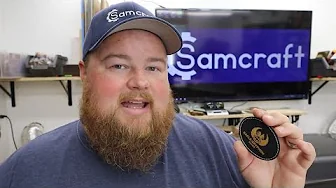
Leatherette patches, commonly used in laser engraving, are designed specifically for this purpose. The colorization of these patches varies based on the material itself rather than the speed and power settings of the laser. Upon purchasing them, the product specifications indicate the colorization outcomes, such as red-to-black or black-to-gold engraving. One particular patch with gold engraving against a black background was particularly admired for its striking appearance. Similar to terracotta, engraving leatherette patches leave behind a slight divot, providing a tactile feel to the engraving. This characteristic contributes to a durable and long-lasting effect that resists rubbing off. The engraving is expected to endure longer in real-world conditions due to the necessity of physical abrasion to fade it, unlike superficial engravings.
Silicone marking by ComMarker B4 fiber laser engraver

They’ve ventured into engraving silicone drink coasters for the first time. These coasters are made entirely of silicone, with a top coating that is removed during engraving, revealing the base color underneath. They showcased coasters in navy with white, white with black, and black with white, among other colors they’ve experimented with. They noted that with the fiber laser, only navy, white, and black seemed to respond well to the laser’s wavelength of light, a noteworthy observation for future experiments. They mentioned encountering similar color responsiveness variations with their other machines, emphasizing the importance of suppliers offering sample packs for experimentation. By testing various colors, they suggested, one can determine which ones work best with their particular laser setup.
Additionally, they mentioned that the last few items they engraved are likely no surprise to anyone familiar with fiber laser engraving. They hinted at the popularity of certain materials for laser engraving, leaving the specific materials to the audience’s imagination.
THICK Metal Business Cards
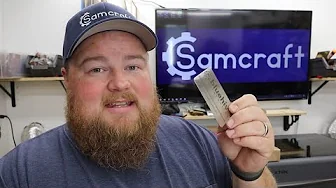
He recently experimented with engraving thick metal business cards using a fiber laser, specifically stainless steel cards of substantial thickness. While acknowledging that such thick cards might not be commonly ordered by customers due to cost, he finds them laser engraving ideals for promotional purposes, particularly for advertising his own business. He believes that the robustness and thickness of these cards make them less likely to be discarded by recipients, especially if they belong to industries like machining or manufacturing, where thick stainless steel conveys a sense of capability beyond flimsy alternatives.
Similarly, he also has anodized aluminum business cards, although not as thick and heavy as stainless steel. Nonetheless, with a thickness of around 0.8 millimeters, they still represent a significant upgrade from thinner alternatives commonly seen. He points out that these cards are not easily bendable, emphasizing their durability and quality, which can effectively communicate the message of craftsmanship and attention to detail. Such materials, he suggests, are not only suitable for engraving but also serve as tangible examples of the quality that clients can expect.
Metal Military & Pet Tags
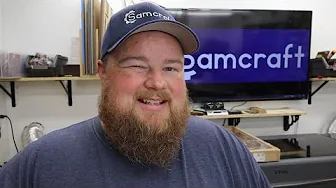
When it comes to metal military and pet tags, he discusses the versatility of aluminum dog tags, whether in the style of military identification tags or as pet tags with various shapes. He notes that the fiber laser efficiently handles the engraving process, especially when batch-processing multiple tags. He highlights the convenience of using the acrylic fence pieces that accompany the ComMarker laser for aligning and processing multiple tags quickly. This setup allows for streamlined production, making it easy to complete one tag after another without delay.
The implications of having a stationary fiber laser for small businesses
He proceeds to analyze the implications of having a stationary fiber laser for small businesses in this particular niche. He poses the question of when it makes sense to opt for a stationary laser over a smaller, portable one, as seen in other videos on his channel. He suggests that the decision can be boiled down to two main factors: speed and power.
In terms of speed, he emphasizes that the larger working area and more powerful laser of this setup enable faster results compared to smaller, portable lasers. This increased speed translates to greater efficiency, particularly when time is equated to money. Additionally, in terms of power, with a 20w laser compared to the smaller lasers ranging from two to five watts, tasks can be completed almost ten times faster with the stationary machine. Moreover, the higher power allows for deeper engraving and better overall effects on materials.
However, he acknowledges that smaller lasers are generally more portable than stationary ones and often come with built-in safety shields, making them suitable for on-the-go engraving at events such as arts and crafts shows. In contrast, the stationary laser lacks such shields and is intended for use in environments where safety precautions, such as wearing personal protective equipment, are strictly observed.
He advises users to incorporate safety measures, such as building a physical enclosure around the machine, to ensure not only their safety but also that of others nearby, especially customers at events. While acknowledging that an open-air machine like this may not be as safe as enclosed ones, he stresses that with proper precautions, it is still feasible for use. He then expresses his intention to discuss the pros and cons of the stationary fiber laser setup.
PROS & CONS of the ComMarker B4 Fiber Laser
Discussing the pros and cons of the ComMarker B4 Fiber Laser, he begins with the advantages of the machine. Firstly, he praises its flawless performance, highlighting its reliability over the two months or longer of use in his workshop for his small business. Additionally, he appreciates its relatively compact design and threaded insert table, which facilitates easy attachment of jigs and fixtures to streamline production processes.
Furthermore, he notes that certain features of the machine, such as rotary compatibility and the inclusion of a foot switch, can be considered both pros and cons depending on the user’s preferences and software compatibility. While he acknowledges the usefulness of these features, particularly for industrial applications, he opts not to use them due to safety concerns in his family-oriented workshop.
Regarding the rotary attachment, he mentions its specialized design primarily for ring engraving, which may limit its utility for other purposes. However, he highlights its robust construction and versatility in terms of mounting options.
Transitioning to software compatibility, he mentions that the machine comes with EZCAD, a capable program, out of the box. However, he prefers to use Lightburn, which offers greater flexibility and compatibility with his existing designs. He mentions some challenges in setting up certain features with Lightburn but attributes this to user error and personal preference.
Finally, he addresses the absence of safety shields and fume extraction as potential drawbacks, although he notes that this is common among machines in this price range. He emphasizes the importance of incorporating safety measures and fume extraction for overall safety, regardless of whether the machine comes as a complete package.
In conclusion, he provides insights into who might benefit from the ComMarker B4 Fiber Laser and who might choose to avoid it based on their specific needs and preferences.
Who Should Buy a Fiber Laser?
For those considering purchasing a fiber laser, he strongly recommends it for individuals intending to establish a laser engraving business seriously. He suggests that a minimum power of 20 watts should be considered, though higher wattages, such as 50 or 60 watts, are preferable if affordable. He advises potential buyers to evaluate their budget and consider the long-term growth potential of their business. He emphasizes that a laser engraving machine is an investment and encourages individuals to invest in themselves if they envision growth in their business.
Conversely, he advises against purchasing the laser for those who are inexperienced with laser technology and do not have a genuine interest in turning it into a business. He mentions that smaller, more user-friendly machines may be suitable for hobbyists or those with limited budgets. However, he notes that the ComMarker B4 Fiber Laser engraver is not overly complicated, so experienced users may still find it suitable for their needs.
In conclusion, he expresses gratitude to viewers for watching and supporting his small business. He invites comments and questions, encourages further engagement, and bids farewell until the next workshop session.
Thanks, Samcraft is willing to share with us the videos he recorded and placed on YouTube https://www.youtube.com/watch?v=Iv3cawA6e_I.

